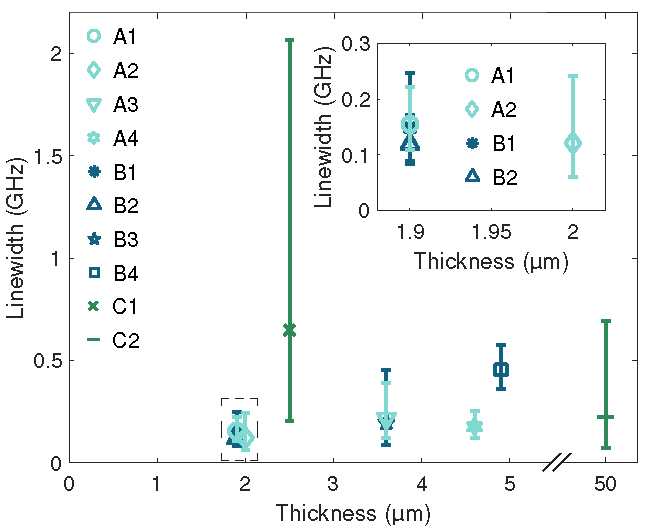In our most recent manuscript, published in Applied Physics Letter, we present an improved method for the creation of narrow-linewidth nitrogen-vacancy centers (NVs) in microstructured diamond. NVs are known for their exceptional spin coherence and convenience in optical spin initialization and readout, and are increasingly used both as a quantum sensor and as a building block for quantum networks. The standard method relying on nitrogen implantation to create NVs tends to create NV populations with broadened optical linewidth. The phenomenon is much aggravated when photonic structures allowing a better photon collection efficiency are created around the emitters. We demonstrate that implantation of carbon ions yields a comparable density of NVs as implantation of nitrogen ions, and that implantation after instead of before the diamond fabrication process results in NV populations with narrow optical linewidths and low charge-noise levels even in thin diamond microstructures. We measure a median NV linewidth of 150 MHz for structures thinner than 5 μm, with no trend of increasing linewidths down to the thinnest measured structure of 1.9 μm and confirm our results in multiple samples implanted with different ion energies and fluences.